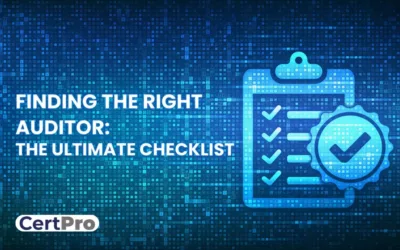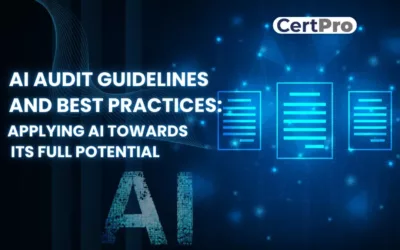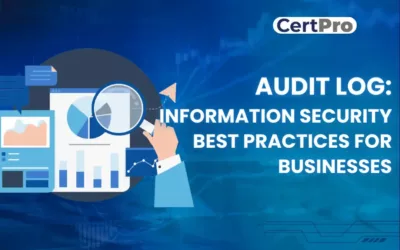In recent days, the Wisconsin Department of Health Services in the US reported a data breach of 19,150 medical health information in June 2023. According to their investigation, an unauthorized third party accessed the employee account, and data breaches occurred. Another incident of Infosys McCamish Systems (IMS) revealed a ransomware attack this year. In February 2024, the organization announced the incident had occurred in November 2023. In addition, it has impacted more than 6 million individuals and exposed their data. The organization is a third-party vendor for the US financial and banking sectors.
What is the relevance of such data in this context? We are trying to find a reasonable way to understand the importance of internal audits in reducing third-party risks. We all know that the success of an organization depends on the strength of its risk assessment capabilities and internal audits. Therefore, these processes can combat emerging threats and continue the functionality. From a business perspective, third-party risk assessment is essential for organizations that depend on external vendors. These vendors can increase your organization’s cybersecurity, legal, and financial risks. This article will discuss some crucial points on Third-Party Risk Management (TPRM) and the role of internal audit.
ROLE OF AN INTERNAL AUDIT IN THIRD-PARTY RISK ASSESSMENT
TPRM is recognizing and controlling the risk associated with your third-party vendors. The main aim is to protect your sensitive information and prevent functional disruption. Again, the process helps maintain your organization’s reputation and data security. Internal Audit (IA) is vital in responding to the risk environment in this process. Also, recent studies revealed that third-party risk was one of the top three areas of concern in cybersecurity. Thus, IA helps your organization create a TPRM program to eliminate the risk of third parties.
Therefore, the primary role of internal auditing is to identify and ensure the effectiveness of risk management strategies. Suppose your organization collaborates with a cloud-based third-party vendor; the internal audit provides the vendor is aligned with your organization’s policies. Thus, it reduces the risks of data breaches in many folds. Internal auditors’ roles in overseeing vendor risk management are specific in this practice. However, the IA team validates the vendor selection process and is not directly involved in vendor management decisions. In addition, the team oversees the ongoing vendor relationships to mitigate new risks and provide vigilant guidance on organizational vulnerabilities. Similarly, internal auditors scrutinize the TRPM program and recognize the potential gaps and areas of improvement.
BENEFITS OF INTERNAL AUDIT IN THIRD-PARTY RISK ASSESSMENT
Incorporating internal audit in your TPRM strategy has multiple benefits. Thus, it helps to manage the risks associated with third-party suppliers. Here are some other benefits:
Improve Compliance Status: The internal audit ensures the vendor’s adherence to regulatory compliance and reduces legal liabilities. Thus, it helps uphold the organization’s reputation and maintain integrity.
Recognizes the Systemic Risks: The internal audit identifies risks that could impact the organization on a large scale. Thus, a proactive approach can eliminate risk from third-party vendors.
Improve Risk Respond: It offers an objective lens through which organizations can identify vendor procedural vulnerabilities. The vulnerabilities might harm their organizations in the future. Therefore, the process leads to developing robust and effective risk response strategies that enhance the organization’s overall resilience.
Increase Accountability and Transparency: Internal audits foster a culture of risk awareness and accountability within your organization. Thus, it ensures transparent and collaborative risk management practices with third-party vendors.
Strategic Decision-Making and Vendor Performance: The process helps in strategic decision-making, particularly in selecting and managing third-party relationships. Again, the approach often results in optimized vendor performance, aligning third-party actions with organizational standards.

CHALLENGES IN INTERNAL AUDITS FOR THIRD-PARTY RISK ASSESSMENT
Internal audit within the TPRM is a complicated process; you can face some challenges like:
Find the Audit Scope: Understanding which third parties fall under which audit scope can be challenging. Identifying the correct scope and process of the risk assessment can also be difficult.
Evaluate the Compliance: Vendor compliance standards are verified to meet the organization’s needs. Thus, the internal audit process needs to consider the current laws and regulations, which is a challenging method.
Data Collection and Analysis: Collecting and analyzing third-party data for risk profiles can be daunting and time-consuming.
Monitoring and Reporting: Continuous monitoring of third-party risks requires constant auditing, resources, and time.
PRESENT TRENDS IN TPRM
Considering improving your existing TPRM program, consider the market trends. Here are some current trends listed below:
Increasing Demands of Third-Party Services: Technological advancements have increased the use of third parties in the IT sector. Therefore, software is increasingly cloud-based, and a third party usually hosts the services.
Threats of Data Breaches: A cybersecurity prediction indicates that around 60% of security incidents this year will be caused by third-party vendors. Thus, monitoring third-party risks and controls for securing the data is essential. In addition, access the potential risks from the third party and create a mitigation strategy.
Compliance with Privacy Laws: Organizations must implement compliance and align the third-party vendors in their compliance process. If your organization follows HIPAA rules, the vendors should follow the exact compliance before collaboration.
The Growing Role of ESG Reporting: ESG is essential for non-financial reporting and public communications. This makes organizations accountable for their partners and their performance.
Automated TPRM: Automation limits the time spent on administration and repetitive tasks. Thus, it can shift your focus to the growth and development of the organization.
STEPS FOR AUDITING YOUR RISK MANAGEMENT PROCESS
For TPRM to work, internal audit is critical to handling third-party risks well. This process includes several essential steps:
Developing an Audit Plan: This critical step includes setting clear audit goals, describing the scope, and choosing the right methods. A complete plan covers all aspects of TPRM, such as finding risks, evaluating them, and reducing their impact.
Continuous Monitoring: Regular reviews of third-party contracts are an essential part of this practice for identifying risks and staying in compliance. Hence, it helps identify risk profile changes and keep the TPRM tool working well.
Integrating Audit Findings: Audit findings strengthen the general plan for managing risk. This combination is essential for making wise choices, especially when dealing with relationships with third parties.
Risk Identification and Assessment: The auditors’ complete risk identification process should consider internal and external factors. Risk estimates must be consistent and thorough to align with the organization’s risk tolerance.
Evaluating Risk Mitigation Strategies: This evaluation checks how well the steps are to reduce risk work. Therefore, it involves examining the controls and competence of risk mitigation strategies.
Enhancing the Risk Function’s Effectiveness: Examining the risk control system confirms that everyone knows their role and responsibilities in managing risk. Thus, the audit should also investigate the risk function involved in strategic choices, especially those related to third-party relationships.

BUILDING A ROBUST THIRD-PARTY RISK MANAGEMENT FRAMEWORK
Your organization must implement a TPRM system to handle third-party risks effectively. Therefore, TPRM needs consideration from management in changing the rules based on the complexity, importance, and size of the third-party services. Here, we have already discussed some essential parts of a strong TPRM structure:
Defining Third-Party Vendors: Internal audits can help you recognize and segregate third-party vendors based on risk level.
Risk Assessment: Evaluating the risk appetite regarding third-party relationships, particularly those in high-risk industries or locations.
Enhanced Vendor Due Diligence: Conduct due diligence to ensure critical third-party relationships align with the institution’s risk profile and regulatory requirements.
Ongoing Monitoring and Performance Standards: Ensuring continuous compliance and risk management by establishing and maintaining rigorous monitoring and performance standards for third-party relationships.
Training and Awareness: Conducting training sessions for stakeholders regarding the significance of effective third-party risk management and the processes involved in TPRM.
FINAL THOUGHTS: AUDITING IMPROVES RISK MANAGEMENT
The internal auditor’s role is to identify third-party risks for your organization. It does more than just review the rules; it actively improves, guides, and shapes the TPRM process. Internal audits are becoming increasingly crucial in TPRM as it moves toward more integrated, technology-driven, and proactive auditing practices. Hence, the process makes organizations more resilient and flexible when handling complex vendor relationships. When internal auditors work closely with risk, compliance, and other areas, it ensures that the bank or credit union follows the same third-party governance policies and processes.
Therefore, third-party risk management reduces the unnecessary steps in the risk assessment process. Again, TPRM is now part of the institution’s general risk management plan, making it easier to handle third-party risks.
FAQ
What are the three types of risk in an audit?
The three main types of audit risk are detection risk, inherent risk, and control risk.
What is risk control in an internal audit?
It includes processes to assess, mitigate, and monitor risks. Thus, organizations can embed internal controls throughout the program cycle and as part of their governance structures.
What are the risk classifications of internal audit?
Risk can be categorized as high, moderate, or low based on likelihood and severity. Therefore, companies use risk matrices to help them prioritize different risks and create strategies as part of the risk management process.
What is RCM in internal audit?
A Risk Control Matrix (RCM) is an essential system element that enables clients to perform a “data-driven” analysis for an organization or custom entity.
What are the elements of TPRM?
The TPRM program includes assessing the risks associated with each third party, conducting thorough due diligence before engagement, and establishing clear contracts that outline roles.

About the Author
ANUPAM SAHA
Anupam Saha, an accomplished Audit Team Leader, possesses expertise in implementing and managing standards across diverse domains. Serving as an ISO 27001 Lead Auditor, Anupam spearheads the establishment and optimization of robust information security frameworks.
FINDING THE RIGHT AUDITOR: THE ULTIMATE CHECKLIST
Selecting an auditor to implement industry-specific rules and regulations is vital. The choice can influence the company’s growth and financial health. Therefore, choosing the right auditor offers valuable insights and ensures compliance and economic stability. You...
AI Audit Guidelines and Best Practices: Applying AI Towards Its Full Potential
Artificial Intelligence is entering different industries, where it is used for customer handling, data management, and documentation processes. The interference of AI is increasing concerns regarding ethical practice and safety. Therefore, AI audits have become more...
AUDIT LOG: INFORMATION SECURITY BEST PRACTICES FOR BUSINESSES
An audit log is the best information security practice for organizations. This article elaborates on the operational process of audit logs and how companies utilize them for business growth. What is an audit log, and how does it work for organizations? For more...
FINDING THE RIGHT AUDITOR: THE ULTIMATE CHECKLIST
Selecting an auditor to implement industry-specific rules and regulations is vital. The choice can influence the company’s growth and financial health. Therefore, choosing the right auditor offers valuable insights and ensures compliance and economic stability. You...
AI Audit Guidelines and Best Practices: Applying AI Towards Its Full Potential
Artificial Intelligence is entering different industries, where it is used for customer handling, data management, and documentation processes. The interference of AI is increasing concerns regarding ethical practice and safety. Therefore, AI audits have become more...
AUDIT LOG: INFORMATION SECURITY BEST PRACTICES FOR BUSINESSES
An audit log is the best information security practice for organizations. This article elaborates on the operational process of audit logs and how companies utilize them for business growth. What is an audit log, and how does it work for organizations? For more...




